Creating content that people want to share isn’t easy.
You might spend weeks putting together an in-depth, awesome post, but when you hit publish…
Crickets.
Even if you do a great job marketing it, it still may not get traction.
So today I’m going to share a surefire technique for getting traffic, social shares, and backlinks for any article you use it on.
I’m calling it the “Double Survey Technique,” and the first blog post I created with it increased total traffic to this site by 843% in the first week.
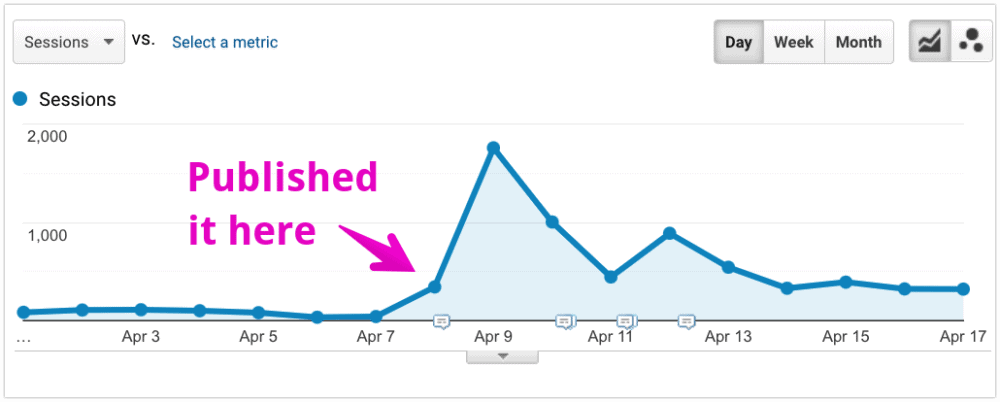
Even after the first big spike of visitors cooled off, my total traffic remained more than 2x what it was before the post.
Now let’s dive into the details and I’ll show you exactly how I did it.
(Tip: Click here to download a checklist that makes it easy to implement this technique.)
The “Double Survey Technique” Content Marketing Strategy
On April 8th, I published my most popular blog post ever:
Blog Statistics: What We Learned from 1,117 Bloggers
GrowthBadger was a very new blog, with only a handful of posts and under a dozen social followers.
Up to that point, its most popular article had only been shared 82 times.
(Insert sad trombone noise.)
But thanks to the Double Survey Technique, my new article was shared over 1,000 times.
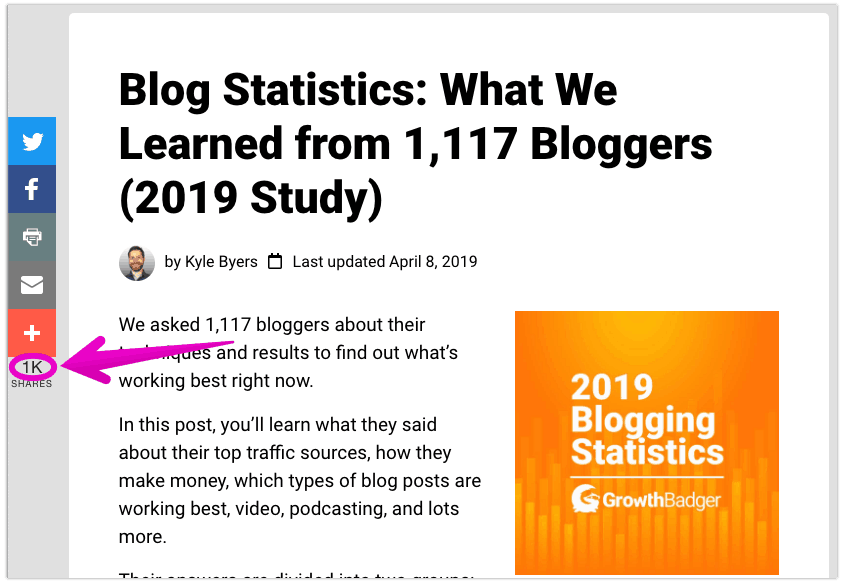
It also quickly received backlinks from 109 sites, which at the time was more than all the other pages on this site combined.

Many of those links came from sites that were much bigger and more authoritative than GrowthBadger:
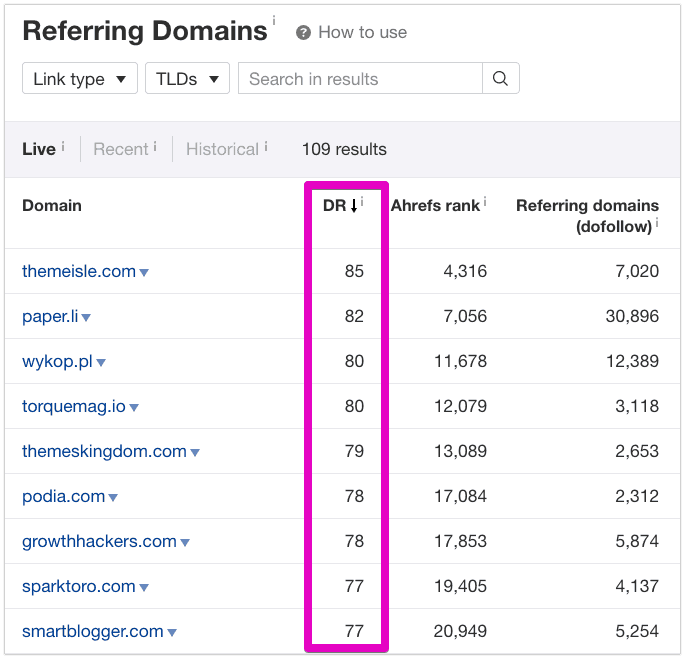
Which has helped this site’s domain authority grow and grow.
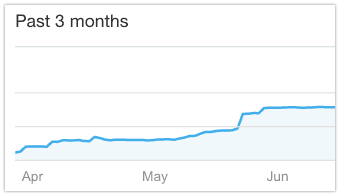
As I said, I did it all using the “Double Survey Technique”.
Based on those results, it’s clear how effective this content marketing strategy can be.
But what I love most about it is that it can help grow anyone’s traffic quickly, no matter how large or small the site is.
Even if it’s brand new.
Why does the Double Survey Technique work so well?
Because it’s taking advantage of two things that already exist outside of your site or blog:
- A subject people are already talking about.
- The reach and trust that other people and brands have already established.
Those are two built-in levers for traffic.
Add them together and suddenly, everyone will be talking about your content.
There are 3 main steps to the Double Survey Technique:
Step 1: Find a good topic for original research
Step 2: Run a survey or experiment to get data on it (survey #1)
Step 3: Ask experts for their opinions on the results (survey #2)
Let me take you through each of those steps.
Step 1: Find a Good Topic for Original Research
If you’re not familiar, “original research” basically just means producing your own numbers or data-driven insights. It’s a super powerful content marketing technique.
Whenever you see a new study, experiment, or statistic…
That’s original research.
For example:
- Counting how many top ecommerce sites use green, red, or orange checkout buttons
- Asking people’s opinions on different profile pictures
- Analyzing millions of outreach emails to spot patterns in response rates
- Or even just testing different headlines on your blog to see which work best.
Original research leads to articles that attract valuable backlinks, get shared over and over again on social media, and generate a ton of traffic.
Here’s why it’s so effective:
First, it’s the power of “new“. So many blog posts are re-hashed information — this is the complete opposite.
But more than that…
Journalists need evidence to cite in their stories.
Other bloggers need data and statistics to call out in their introductions.
And people love sharing an eye-catching fact.
News outlets even write entire articles based around other people’s original research:

And big companies often publish blog posts that simply list (and comment on) a bunch of interesting statistics about their industry:
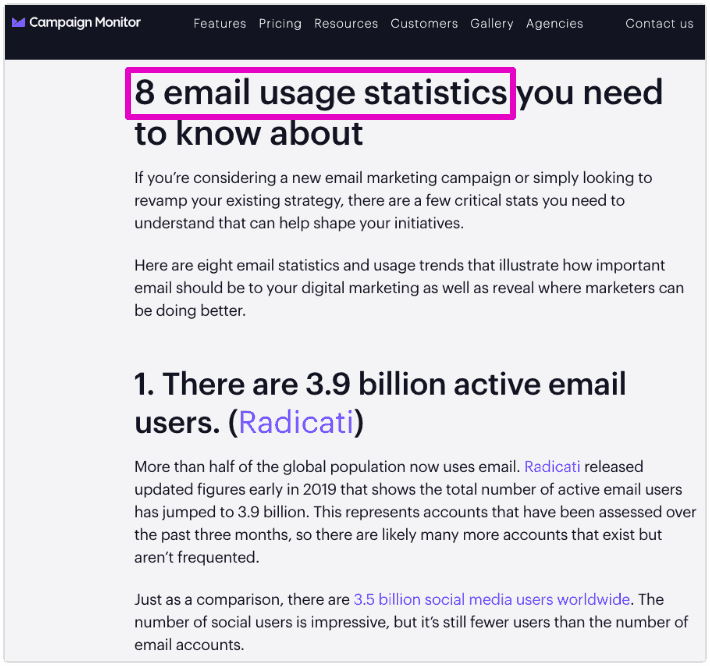
Original research works so well that 97% of marketers who use it say it meets or exceeds their expectations.
(Case in point: that site just earned a link from me thanks to that statistic.)
Doing this kind of research also sets you up as a leader.
You’re making the kind of contribution that most people just don’t.
So how do you choose a topic to research?
One surefire way is to find a question, issue people like to argue about, piece of “common knowledge,” or opinion people have that isn’t backed up by hard facts.
That’s the internet in a nutshell, right?
(Ha.)
Of course, it also needs to be in your niche.
Or at least related to it.
With this approach, you know people will talk about it — because they already are!
Slipping your research in as a reference point becomes natural for them once it’s available.
You’re providing the “missing statistic”.
If nothing comes to mind, check out relevant communities such as Facebook groups, forums, or subreddits on Reddit to see what common questions and arguments come up.
Quora is another great resource — just search for your topic (or a subtopic within it) and note which questions could have data-driven answers:
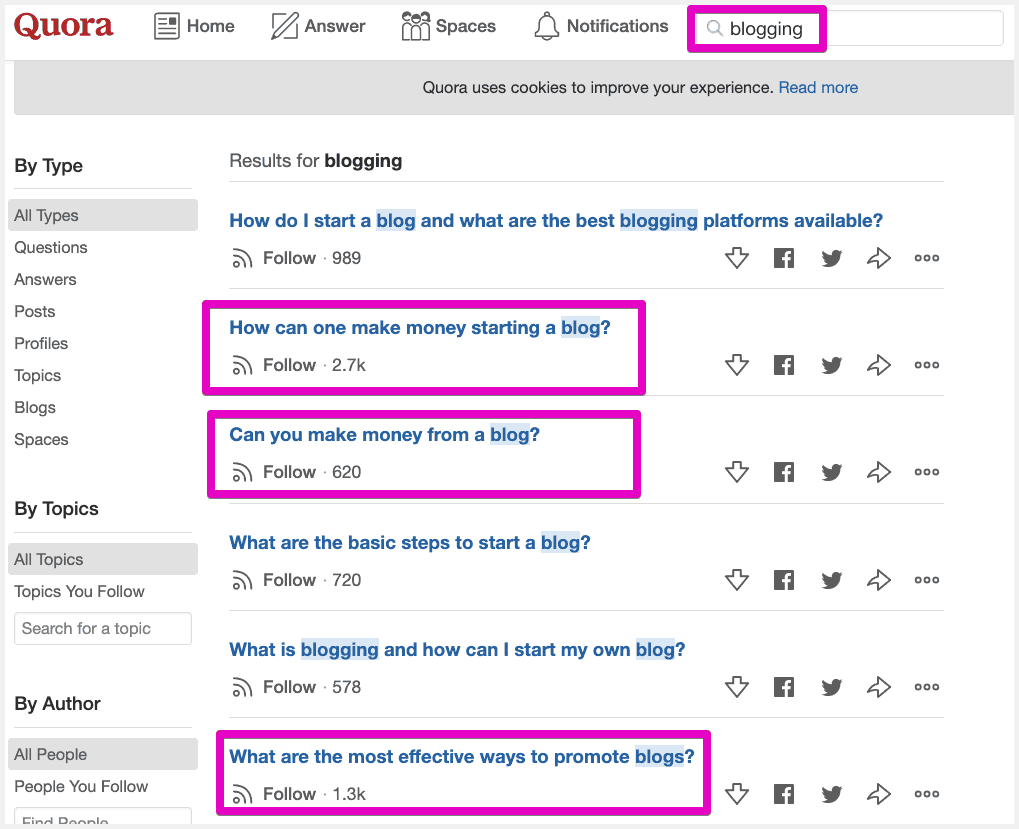
Or do the same with Google:
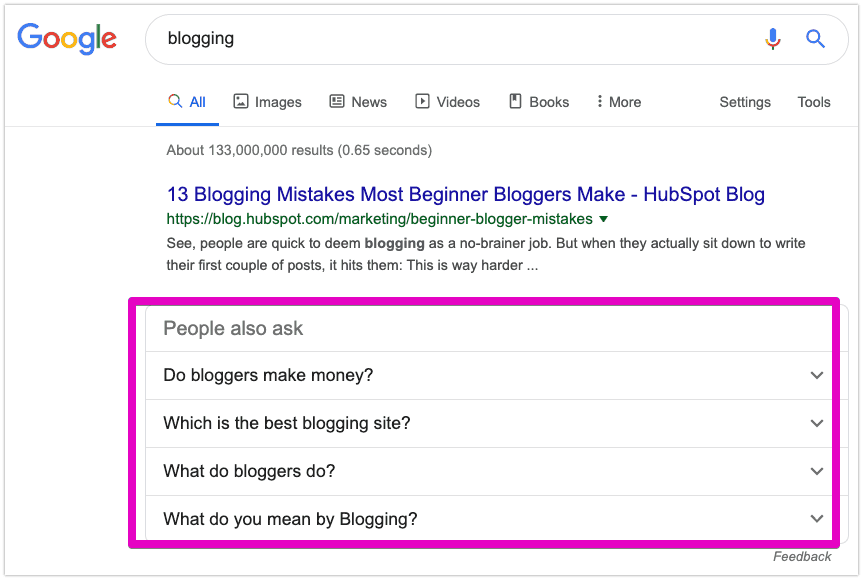
Or use Answer The Public:

In my case, I wanted to do original research about blogging.
There are a lot of things bloggers argue about:
- Is promotion important or should I just focus on writing content?
- How often do I need to publish new articles?
- Do I have to be active on social media?
- How important is SEO?
Every blogger has opinions on these topics, but they never seem to have evidence to back them up.
I took some time to observe and write down those questions (and more).
Then I searched for existing studies, experiments, and data that might already answer them.
I threw out many of my original ideas in the process, either because they’d already been well-covered or because they seemed too difficult to address.
But there were about 6 questions that stood out as:
a) Being a common or important enough topic, and
b) Having no good or recent data available.
Which I decided to answer with my study.
Though in hindsight, I actually think a half-dozen major questions was too many. (Especially for a first attempt.)
Why?
Each major question can lead to multiple insights or statistics.
Plus, some questions are more complex than others.
(For example, my original question “is promotion important or should I just focus on writing content?” ended up being split up into three different questions in my study: one for the importance of content quality, one for the importance of promotion, and one for how that promotion should be done.)
So rather than trying to answer 6 major questions, I think starting with 1 – 3 would have been enough to run a decent study.
That would have made the process faster and left me with more ideas for future studies.
Step 2: Run a Survey or Experiment to Answer Your Question(s)
When you see the word “survey,” you probably think of a simple questionnaire.
Those types of surveys can be great, and that’s what I used for my big 2019 Blogging Study.
But “surveying” can also simply mean observing — typically looking for patterns in what other people and businesses are doing. That’s a second type of original research you can use.
And a third type of research is controlled experiments, which allow you to directly see people’s behavior.
All three of those methods are good ways to conduct original research in order to answer the question(s) you just chose in step 1.
Let’s quickly look at the pros and cons of each method, as well as some examples and common tactics that can help you carry it out.
The three types of original research:
Questionnaire surveys:
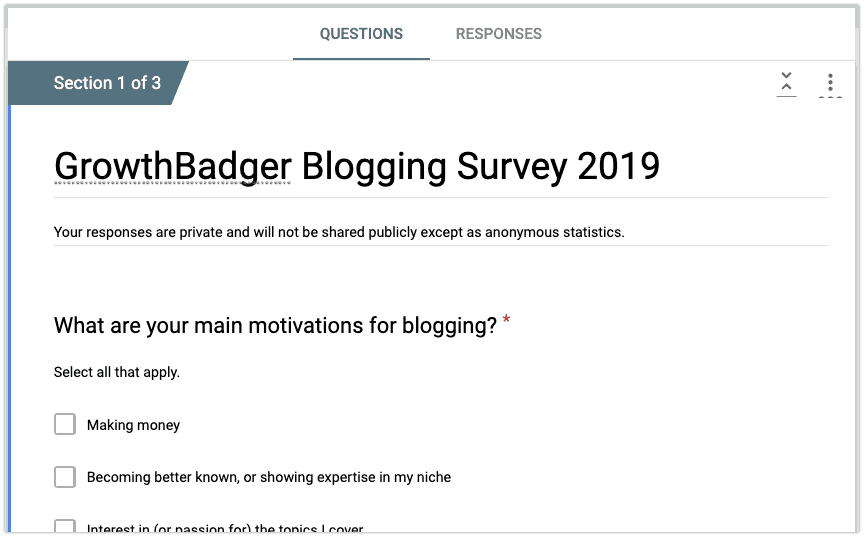
- Pros: Can quickly get hundreds (or thousands) of responses about anything general, or a smaller number if more specific. Can also be used for experimentation purposes.
- Cons: May cost money to get enough responses (if you don’t already have a large audience).
- Common tactics: Using giveaways, directly paying for participants, hiring market research companies, sharing on social media, reaching out to your own audience/network.
- Examples: Credo’s biannual SEO agency survey, LendEDU’s “what would you do for a 10% raise” questionnaire, the Content Marketing Institute’s annual marketing studies, UpWork’s Freelancing in America survey.
Observational studies:

- Pros: Can be done for free if you have enough time. Lots of flexibility in topics to study.
- Cons: Usually either has a small sample size or is done with a big internal database (or data partner).
- Common tactics: Use a data partner, hire a freelancer to help.
- Examples: ThePudding’s rankings of rappers by vocabulary size (pictured above), BuzzSumo’s study of the most-shared headlines, OkCupid’s Language of Love report, Placer.ai’s report on the offline impact of Prime Day.
Experiments:

- Pros: Allows for a lot of creativity. Measuring behavior can be more reliable/trustworthy than asking opinions.
- Cons: May require a lot of traffic or special resources (but doesn’t have to).
- Common tactics: A/B testing on your own site, test different service providers, special survey formats, Amazon Mechanical Turk.
- Examples: DuckDuckGo’s study of Google’s customization of search results (pictured above), Dave Lee’s laptop render-time testing, Labdoor’s nutritional-supplement testing, GrowthBadger’s own domain extensions experiment (which I’ll talk about more later in this article).
Designing the study
The question(s) you want to answer will help determine which research method to use.
Like I said, for my 2019 Blogging Study I went with a typical questionnaire-type survey.
To create it, I used Google Forms.
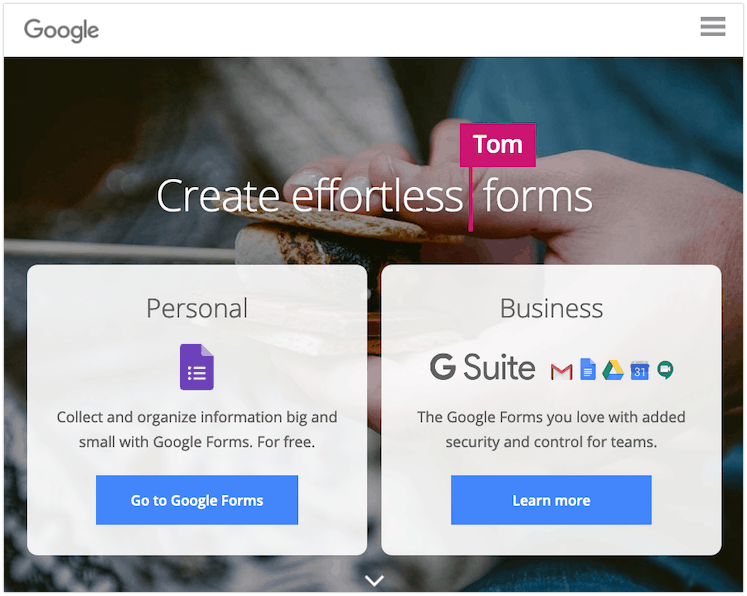
It’s free and simple.
But setting up your survey is the easy part.
What’s harder is actually writing the questions to ask.
A small tweak in phrasing can be the difference between a great insight and a wasted opportunity.
Or even something completely unusable.
Before launching a survey, I like to “fast forward” and imagine I already have all the responses.
Now, how exactly will I phrase the key takeaway(s) from each question?
What will the charts look like?
Can the major insights be summed up in a tweet or short headline?
This is very important.
Short, punchy facts are the ones that spread.
So if it’s going to be confusing or hard to communicate the insight from a given question, re-work the question to make its outcome clearer.
For example…
In my blogging survey, one of the questions was:
“Over the past 3 years, has running a successful blog gotten:”
a) easier, b) harder, or c) stayed about the same / I don’t know
In the first draft of the survey, I also had a follow-up question:
“If you answered ‘harder’, why do you think that is?”
With answers like:
a) Increased competition, b) Large traffic sources such as Facebook and Google are harder to get traffic from …
etc.
Yuck.
Any data from that follow-up question would be super difficult to quote.
Imagine if:
35% of bloggers said it had gotten harder…
And then 20% of those people said it was because large traffic sources such as Facebook and Google had gotten harder to get traffic from.
If you’re a journalist who’s just trying to make a point about Google’s monopoly, you’re not going to quote that statistic.
It’s too long.
That question-and-follow-up-question structure also ignores the big chunk of bloggers who may not think that blogging has gotten harder overall, but who do think that getting traffic from Facebook or Google has gotten more difficult.
So I made the two questions unrelated to each other (and also separated Google from Facebook in the answers).
That makes it much easier to “get to the point” when quoting my research, and it gives a clearer picture of how many bloggers think Facebook and Google have gotten harder to deal with.
Three more tips for making your survey great:
Make sure it has…
- As few questions as possible — this will make it easier to get more responses. So make sure you really care about the answer to each question.
- Very clear, non-ambiguous questions that don’t bias the person’s answer in one direction or another.
- And an opt-in for your email list 😉:
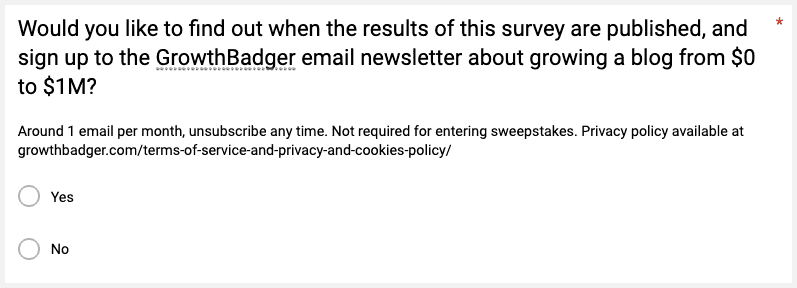
(Adding that opt-in question to my survey netted me 328 new email subscribers — about 30% of all respondents said “yes”.)
Choosing a sample size
Sample size just means how many people (or entities) you’re going to include in your study.
People tend to trust studies more when they have larger sample sizes.
Which makes sense, because large sample sizes yield more accurate results.
But even smaller surveys of under 100 people can be successful if you’re just starting out (or if you’re focusing on a narrow enough niche).
However, it’s best to use a large enough sample size to make your findings statistically significant if you can.
SurveyMonkey has a good sample size calculator to determine how big your study needs to be in order to make it statistically significant.

In my case, I needed several hundred responses for statistical significance.
However, I aimed higher.
Why?
Some of the most popular questionnaire studies I’d seen in the content marketing industry (like Orbit Media’s annual study) had about 1,000 respondents.
So I wanted to get at least that many in order to stand out as authoritative.
(Even if getting more respondents wouldn’t really make the results more meaningful from a statistical perspective.)
But I knew it wouldn’t be easy to get 1,000 bloggers to take my survey.
Getting study participants
I know of four main ways to find study participants:
- Outreach to your existing audience or network (free but time-consuming)
- Social media, forums and online communities (best with an incentive, like a giveaway)
- Advertising (again with an incentive like a giveaway)
- Directly pay for responses (more expensive but faster, if your needs aren’t too specific. No giveaway needed.)
You may only need to use one method, but I tried all four.
The first is self-explanatory: email everyone you know (if they fit the requirements of your study).
I only got about 70 responses that way.
So I decided to try pushing my survey via social media and advertising.
But first, I needed an incentive for people to take it.
I needed to make a giveaway.
Creating a giveaway
After doing some research on which products bloggers would be most interested in, I reached out to several businesses to see if they would sponsor my giveaway.
First I reached out to specific people from each business on Twitter — typically the founder or head marketer.
(This probably works best with startups and small businesses, by the way. And especially for digital products that are essentially free for them to give away.)
After commenting on something they’d posted, I sent them a quick couple sentences about the giveaway, and asked if I could send more details.
In most cases, they said yes and gave me an email address to follow-up.
In my follow-up email, I:
- Provided more details
- Asked for a specific prize
- Said why they should give it to me, i.e. what’s in it for them (this is very important)
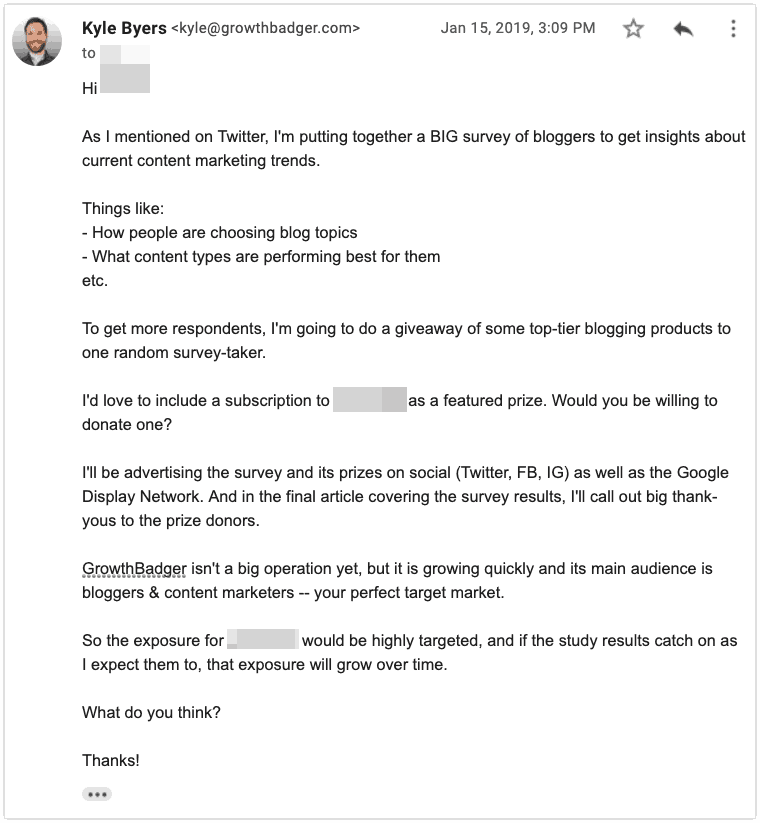
After contacting seven businesses, I had two prize donations totaling $959:
- A $600 premium WordPress hosting package from Kinsta
- A $359 annual subscription to Mangools SEO tools
That alone might’ve been enough, but since both of those were more geared toward advanced bloggers I also spent $68 to buy Darren Rowse’s ProBlogger course and Ann Handley’s book, Everybody Writes.
Next, I threw together a basic landing page with details about the giveaway and links to the survey:

And finally I edited my survey to give people a way to enter the giveaway at the end:
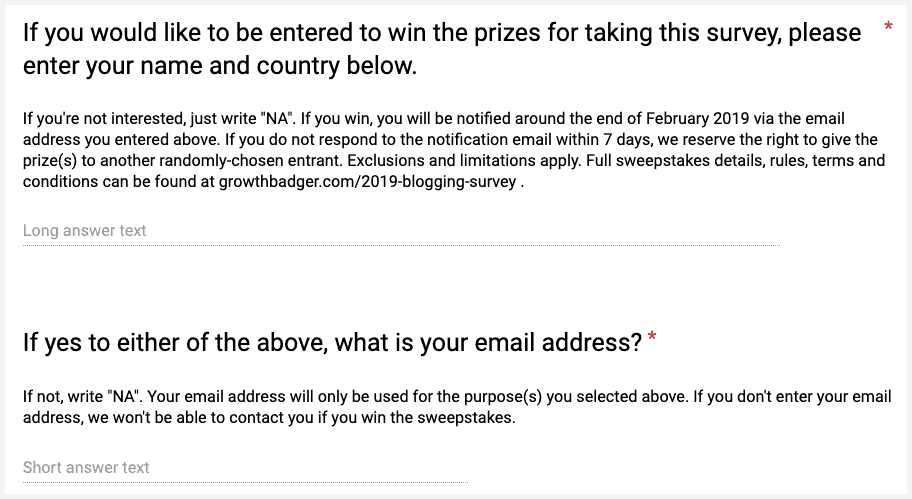
Now it was time to promote the giveaway & survey.
Promoting the giveaway
The key here is knowing where the types of people you’re looking for hang out online.
In my case, the participants I wanted were a big chunk of my target audience: bloggers. So I already knew some great places to find them.
Reddit, specifically the r/Blogging subreddit:
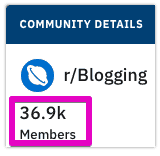
I actually posted there twice — once when the survey started and once a few days before it closed.

Twitter, where different blogging hashtags helped it spread (and where the companies who donated prizes also shared it with their followers):
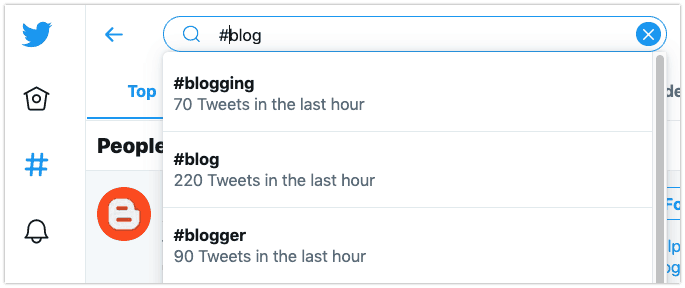
As well as Facebook and Instagram.
I also spent about $350 running ads for the survey/giveaway on Facebook, Instagram, Twitter, Reddit and the Google Display Network.
The best-performing ads were the ones on Instagram.
But I ended up getting more responses from organic social media than from paid ads anyway.
Directly paying for study participants
I used Amazon Mechanical Turk for this, which is a site where freelancers do micro-tasks like filling out surveys. It’s one of the cheapest options for getting participants for original research, especially if you don’t need a specific group to participate.
But it only has basic audience types. (“Bloggers” is one, but “vegan weightlifters” is not.)
It also has a learning curve.
If you have more specific audience needs, Google Surveys allows the use of screening questions to filter out people that don’t fit your requirements. It’s also much simpler to use than Mechanical Turk.
Or you can use the even more powerful (but more expensive) SurveyMonkey Audience, which lets you select from a wide range of groups before launching.
(They have vegan weightlifters for $4 per response, FYI.)
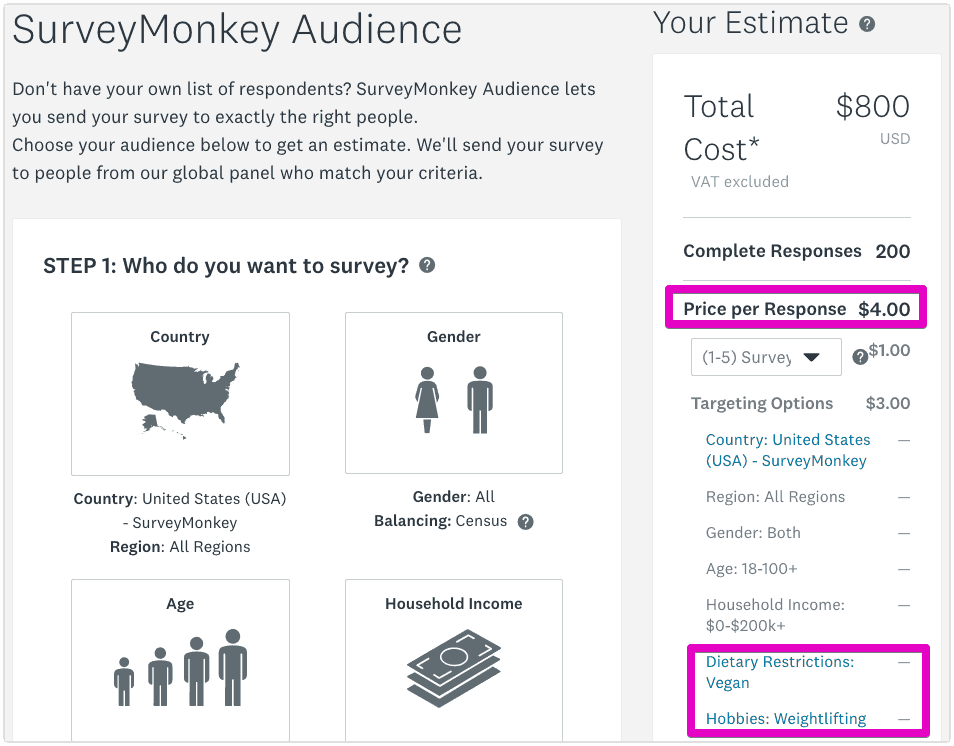
I ended up paying $0.80 per survey entry on Mechanical Turk, but it would’ve been cheaper if my respondents didn’t have to be bloggers, or if had a shorter survey.
And I chose to only buy about 120 responses this way.
The reason is simple:
I wanted plenty of high-income bloggers to take my survey, and knew those people would probably not be spending their time working on Mechanical Turk. ¯\_(ツ)_/¯
The results
I was able to get 1,117 total survey responses.
The ~$500 I spent on paid traffic sources brought in fewer than half of those. So if you’re just starting out and don’t have much budget, you don’t have to go the paid route.
On the other hand, if you have more budget than time, directly paying for survey responses works really well (and eliminates the need for a giveaway).
After getting your survey responses, it’s time to look at the data.
Google Forms spits out survey response data in two ways: as a spreadsheet of raw answers in Google Sheets, and as colorful charts in the “responses” tab on the site itself.
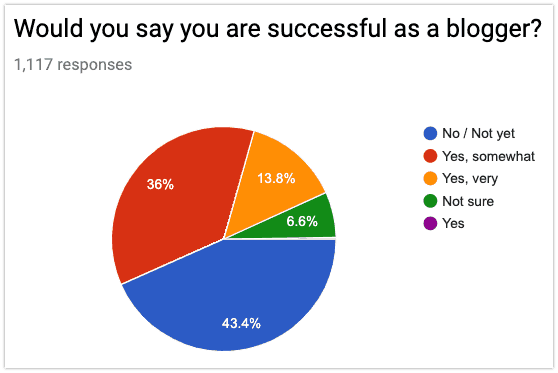
When you write your study-results post, the simplest route is to use the charts Google provides.
Nothing wrong with that.
But I wanted something Google didn’t provide: charts segmented by income level, to show the different methods bloggers earning over $50K per year use compared to lower-income bloggers.
I also wanted my charts to feel a bit more premium.
So I hired an awesome overseas graphic designer to create new ones.
Here’s one of the charts I had made:
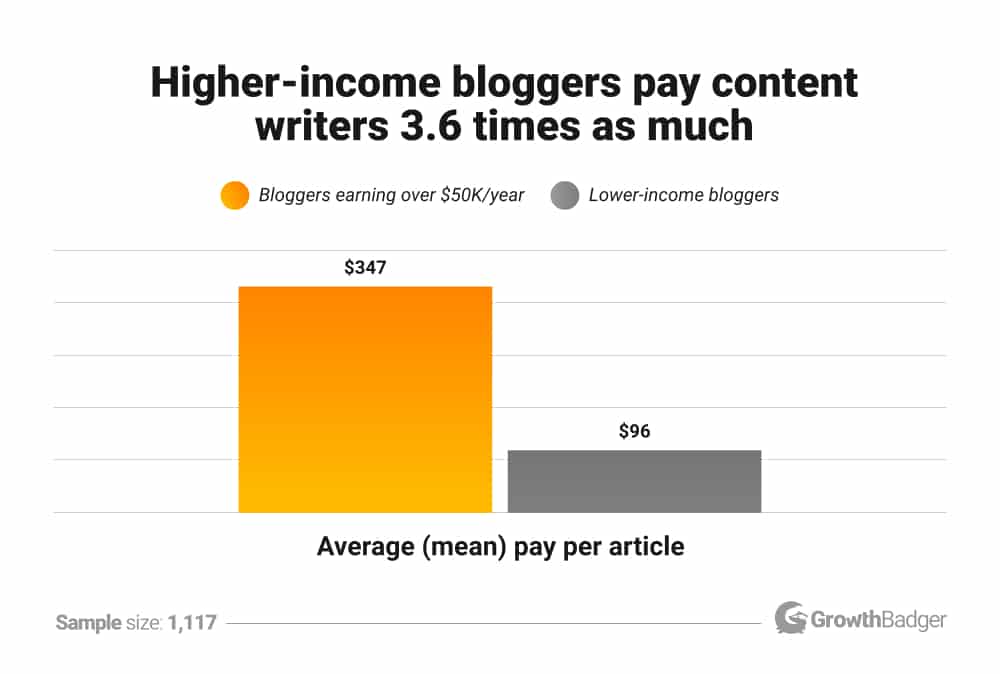
If you’d like to do the same, Dribbble, 99designs and UpWork are good places to find designers/illustrators.
While the rest of the charts were being made, I started work on the final step.
Step 3: Survey Experts for Their Opinions on the Results (Survey #2)
This final step is key to the entire Double Survey Technique.
When you share your own content, the most you can hope for is that some of your audience will see it.
And if you’re lucky, some of those people will share it with their friends.
Not a great outcome, even if you have a lot of followers.
Which I definitely don’t:
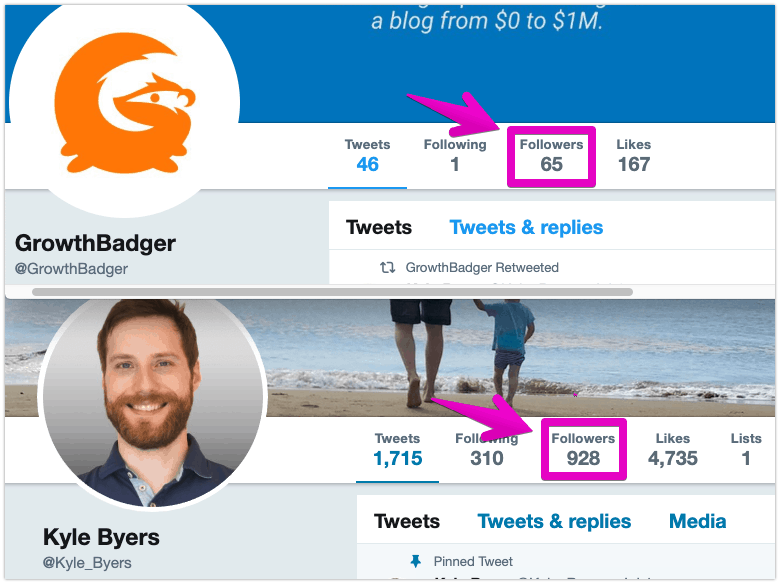
But when an influencer or someone more established than you shares your content, you get the attention of their much bigger audience.
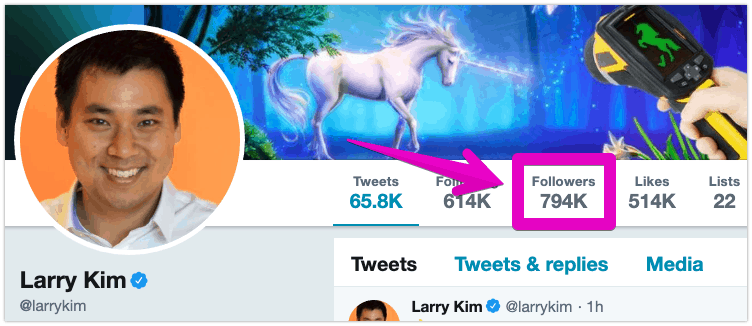
You also gain instant trust, making other influencers more likely to share your work as well.
But how can you get leaders like that to notice your content?
By quoting them in it.
You’ve probably seen this tactic used in standalone “roundup” articles, like this one:

They just ask a single question to a bunch of influencers, then list their answers.
That’s the whole article.
That type of content might do fine on social, but it’s unlikely to attract many backlinks with high SEO value.
It’s just too shallow.
However, adding quotes from experts and influencers to your already-great original research is one of the fastest ways to get it in front of more people…
For both social shares and backlinks.
Not only because the influencers themselves will share it, but because their quotes will add real value to your article and make it more trustworthy.
As a bonus, this process also helps you build relationships with leaders in your niche. People who you probably respect and would love to know anyway.
And…
It’s easier than you think.
First, create a list of relevant influencers.
When I say “influencer” here, I don’t mean Instagram models. (Unless you’re in the fashion niche, maybe.)
I mean people who have actual influence with your target audience.
Thought-leaders and tastemakers in your space.
You can probably think of plenty of these on your own:
-
- Whose blogs do you read?
- Who do you follow on social?
- Who is always getting talked about in the communities you’re active in?
- Whose content do you see over and over again?
- Who do you keep hearing interviewed in podcasts?
- Who do you look up to?
- Who contributes to the biggest sites in your field? (Journalists, contributing authors, etc.)
And “indirect influencers” can be great, too: the people who influence the people who influence your target audience.
Drawing a blank?
Don’t worry.
Here are a few quick ways to find influencers in your space.
Try searching Google for “[your topic] blog” or “best [your topic] blogs”.
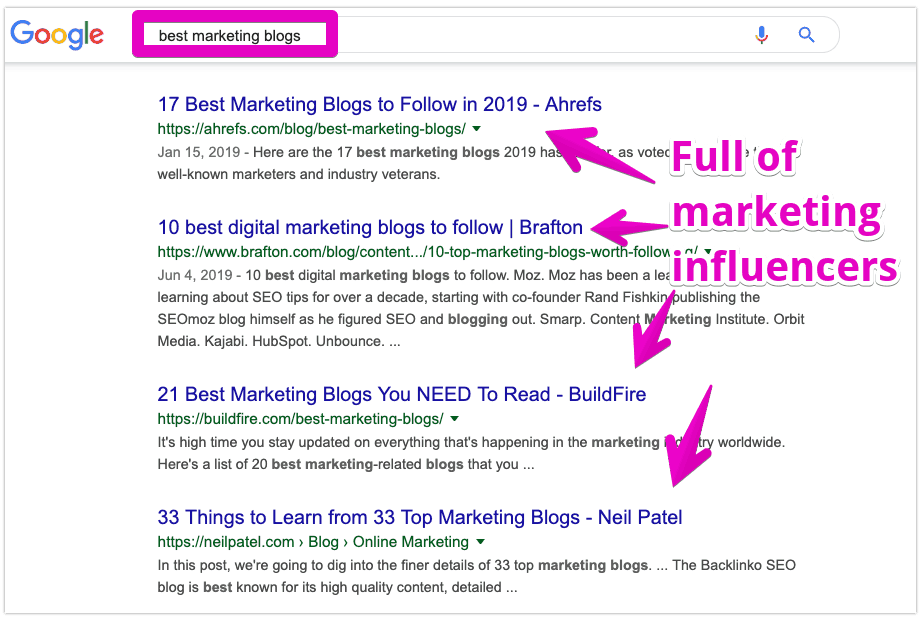
Or search Twitter, Pinterest, Facebook, Reddit, etc. — wherever your target audience is active.
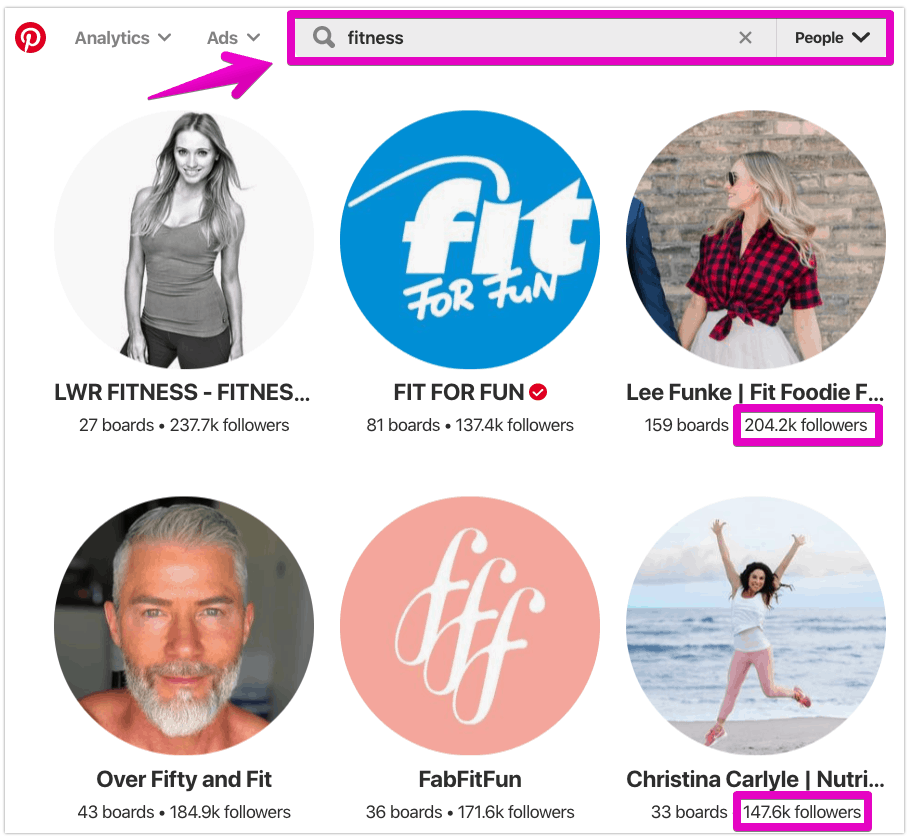
BuzzSumo is another great tool for this (free for limited use).
Just pop over to the influencers tab and search for your topic, and it’ll spit out a huge list of influencers.
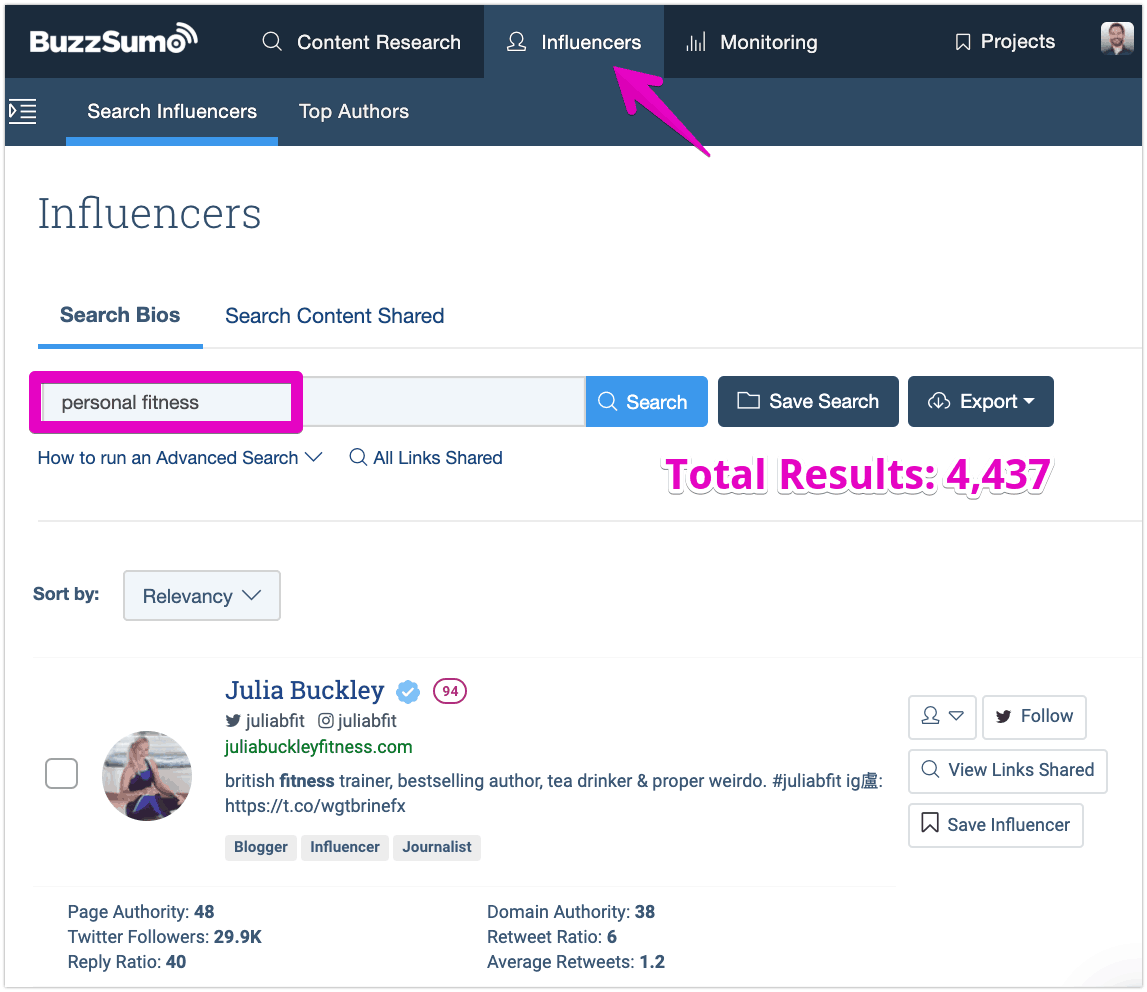
And one last way to find influencers is by signing up as a journalist on Help A Reporter (HARO). You can submit a free source request with a brief description of your study, and experts will actually pitch you to be included.
I compiled a list of 24 influencers, which was probably more than necessary.
I’d recommend starting with a list of around 10 people in most cases, and even fewer if your article is going to be short.
Next, warm them up.
My preferred outreach method is via email.
But rather than immediately emailing them, you’ll get more responses if you warm them up first by interacting with them elsewhere. (The more requests they get, the more important this is.)
Comment on their blogs, reply or share their content on social, etc.
Try to truly add to the conversation or be helpful in some way. Most comments are short and vapid, so just a little extra effort can make yours stand out.
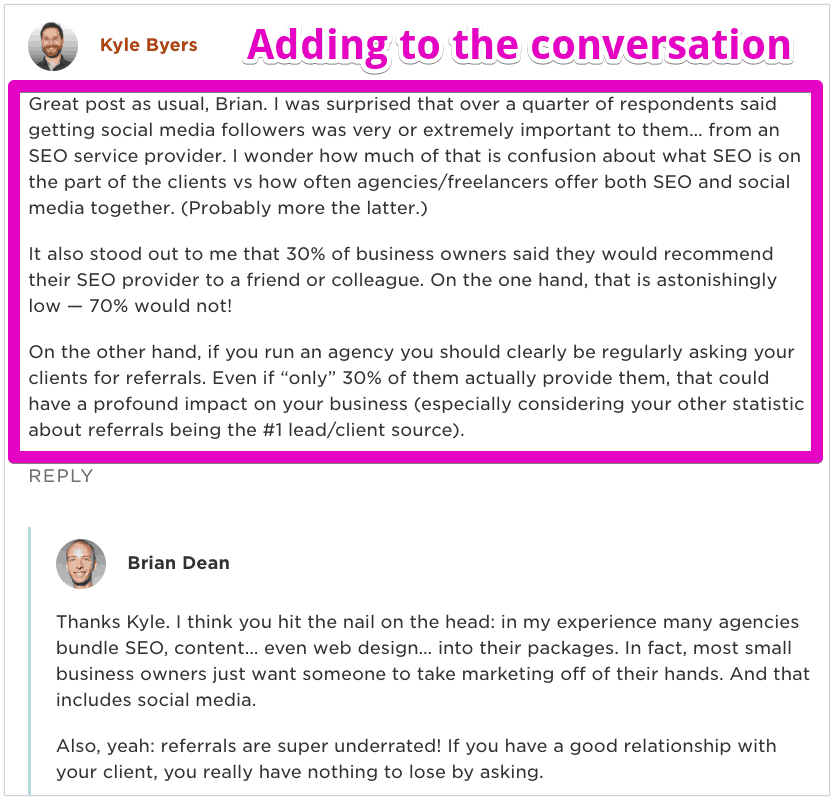
And you’ll be more memorable if your profile picture is consistent across email, social media, and blog comments.

All of this will make your list of influencers more likely to respond when you do reach out via email.
Now, gather their email addresses.
My favorite method for quickly finding email addresses is Hunter.io.
Just sign up for a free account, type in the person’s site domain and hit “find email addresses”:

Anymail Finder and Voila Norbert are also good options.
Next, email them.
Unlike a typical survey where you’d send a list of questions to everyone, the second “survey” in the Double Survey Technique consists of individually asking for each influencer’s opinion.
If you have a lot of different stats or findings from your study, like I did, you can select a different one for each influencer to react to (based on their interests or expertise if possible).
Or if you only have one finding or core set of findings, then you can ask each person the same thing.
But either way, don’t try to send them your whole article — no one has time for that.
Make it easy.
Summarize.
And another thing…
Don’t make the same mistake I did.
When I reached out to the first few influencers on my list, I sent my entire detailed request along with the chart I wanted their opinion on in the very first email.
In one case, I even did it in a super long (and kind of cringey) Twitter DM.
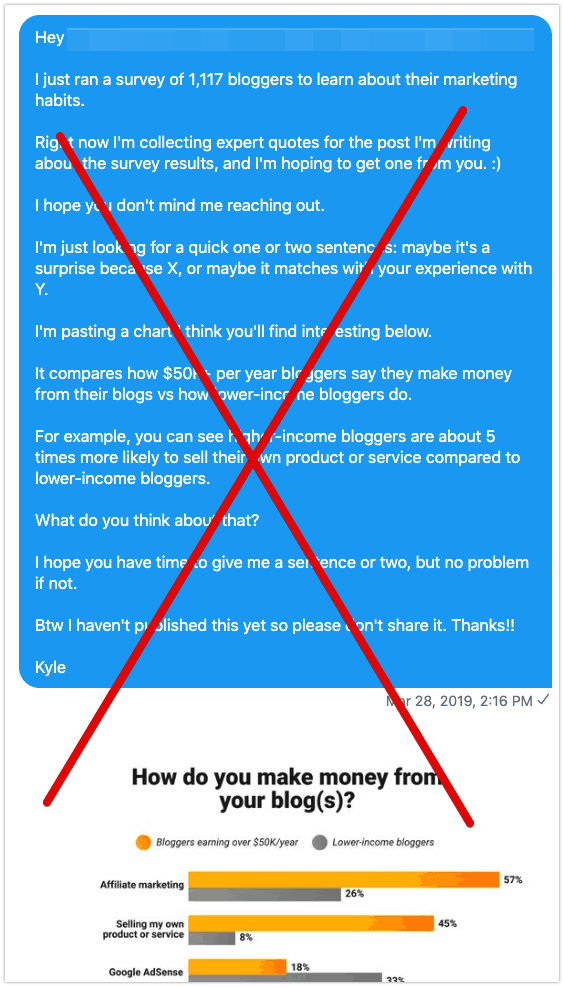
Not one of those first few people responded.
Why not?
First, my wording wasn’t great.
But more than that, it was just too much for an initial message.
These are busy people. You can’t hold their attention with a big wall of text and images right off the bat.
Plus, having an attachment in your first email makes it more likely to get caught in spam filters.
So for the next influencers on my list, I started with a “teaser” email asking if I could send them the results.

My pitch could be shortened a bit and improved, but I would always:
- Address them by name (obviously)
- Reference a recent interaction you had with them (if you did)
- Describe the stat or chart you want them to look at — again, based on their interests
- Avoid rambling
In any case, this “teaser” approach worked much better.
A decent number of people agreed right away, and I responded to them as fast as I could.
Of course, not everyone replied.
Once a week or so had passed, I followed up with the people I hadn’t heard back from yet.
Now that I’d gotten some early contributions, I used these follow-up emails as an opportunity to add social proof.
I “name-dropped” some of the people who had already agreed — especially if the person I was emailing knew them.
(For example, if they followed them on Twitter or had been interviewed on their podcast).
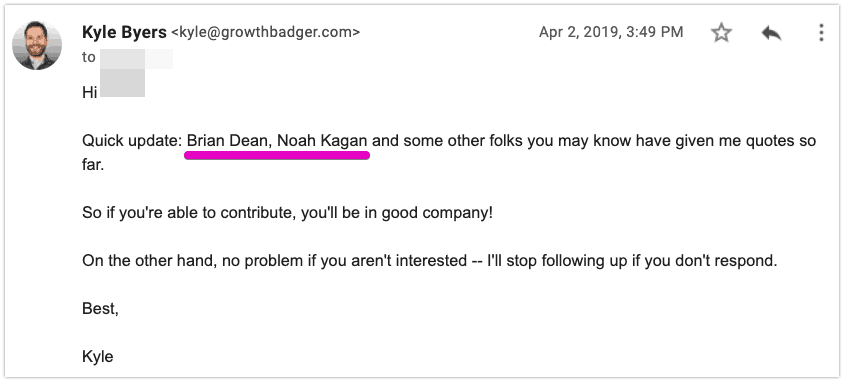
I didn’t want to be “that guy” who can’t take a hint, so I only followed up with each person one time.
The results?
At the beginning of all of this, I thought that only a few people out of my list of 24 would even respond.
Instead:
- 19 responded
- 18 said I could send the chart
- And 14 sent quotes for my article
Many of whom were “big names” I’d thought were way out of my league.

Not bad for a complete unknown with a tiny new site!
Most people — or at least most marketers — seem to understand that they also benefit from being quoted in high-quality articles.
So if the posts you’ve already published are really good, people will be more willing to contribute quotes to your next one.
Publish and promote your results article.
Once the final blogging study results article was live, I sent a quick heads-up to let each of the contributing influencers know.
Many of them helped spread the word:

In total, the people I quoted in my article shared it to follower counts of over 1 million people on Twitter alone.

Not only that — other influencers that weren’t quoted also caught on and shared it:
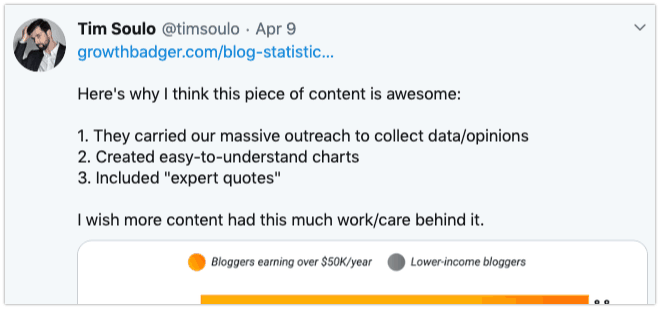
As a result, the blogging study post ended up getting over 800 social shares in the first week alone.
(Remember, my previous top-shared article only had 82 shares at the time.)
The blogging study post was also a top 10 marketing article on SparkToro Trending for the month of April.
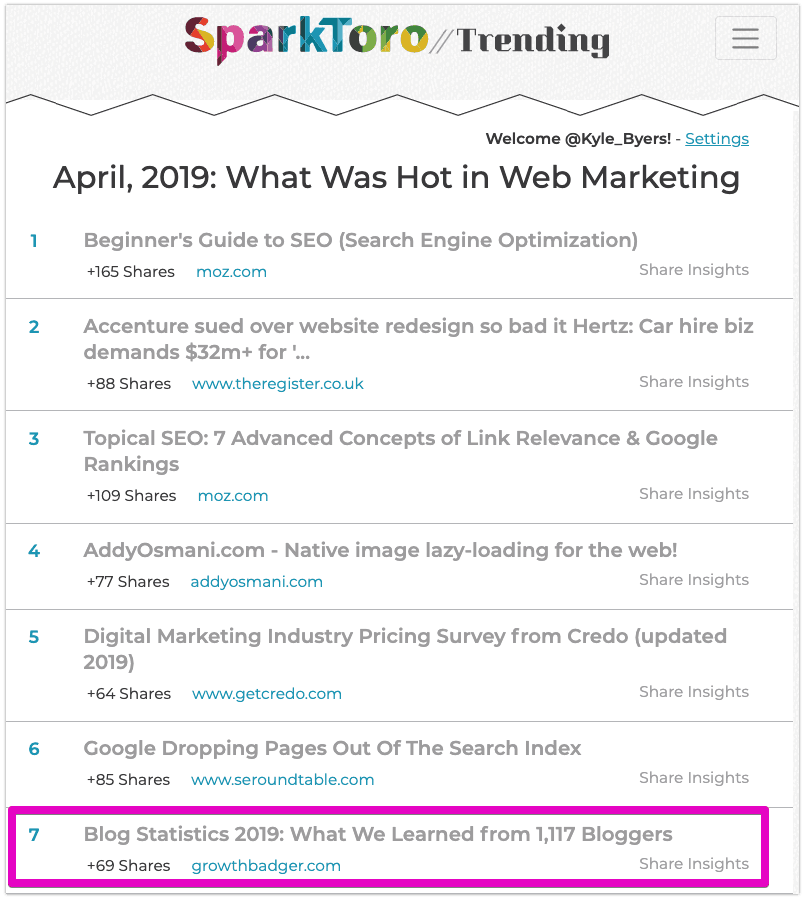
Of course, I did my part to promote it too.
I posted it in the places my target audience hangs out: Reddit, GrowthHackers, etc.
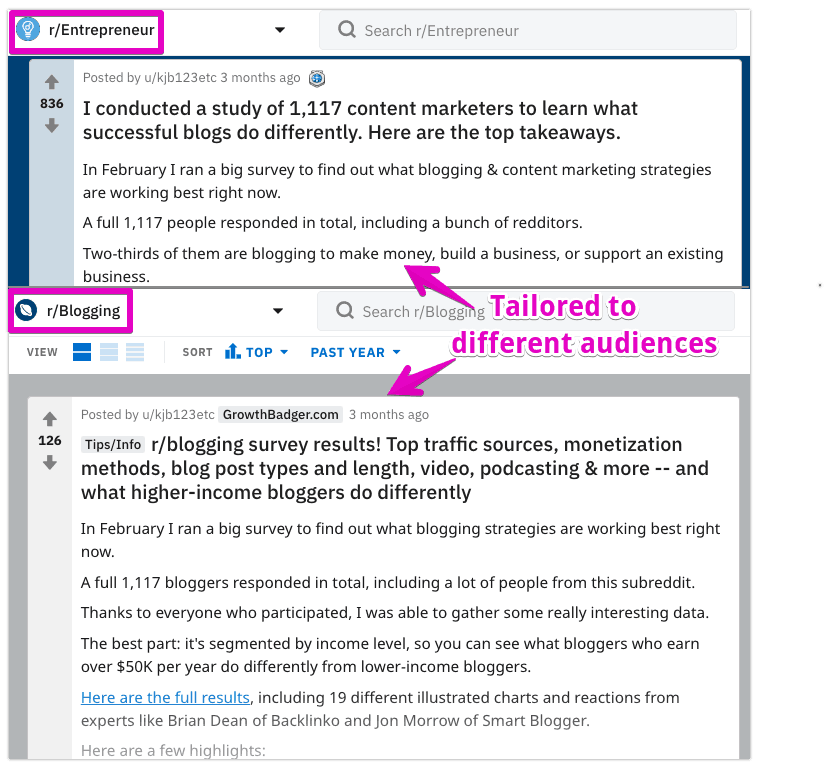
And sent it to my email list — which had recently grown by several hundred very interested people (the bloggers who had taken my survey and subscribed at the end of it).
But the vast majority of the attention my post received was due to the influencers who shared it.
And as you saw at the beginning of this post, additional shares, traffic and backlinks have continued to roll in ever since.
Bonus: Example #2 (Shorter)
The example above worked out really well.
However, it took a long time to put together. Months of work and lots of moving parts.
Part of that was because it was my first time and I was figuring it out as I went.
But it was also partly intentional: I wanted to “go big”.
For my next post, I used the Double Survey Technique again, but only gave myself 2 weeks from start to finish.
That meant I had to take some serious shortcuts.
And?
The resulting shorter article, Domain Extensions Study: Is “.com” Still the Best TLD? (2019 Data), hasn’t been quite as successful as the 2019 Blogging Survey post I covered above…
But it has done well.
Better than any other post on this site at that point (aside from the blogger study).
The Domain Extensions Study post quickly received 329 social shares, plus attracted backlinks from 30 sites.
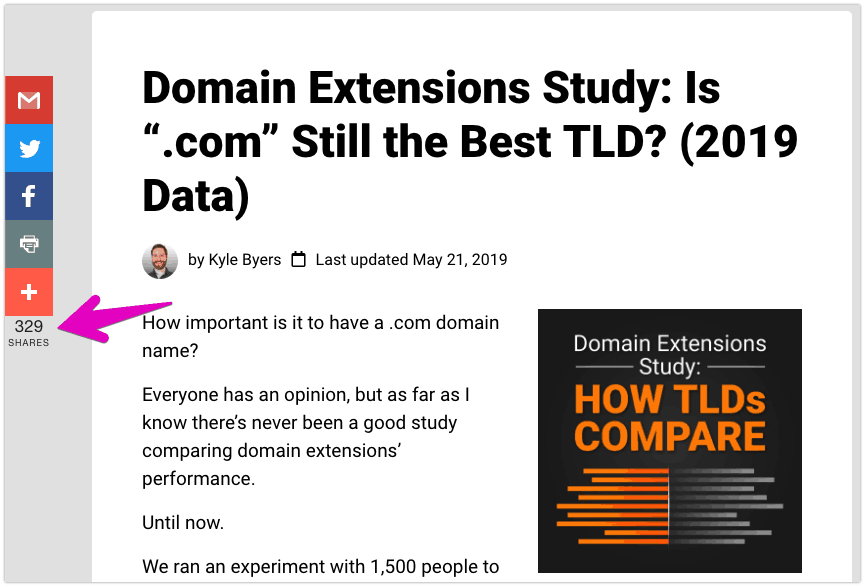
And it took 1/5 of the time.
Here’s a quick rundown of what I did differently at each step for this article:
1: Find a Good Topic for Original Research
This time, instead of trying to answer an entire group of questions around blogging, I decided to answer just one question:
When starting a new site, is it important to register a “.com” domain?
This was a great “missing statistic” question.
People love to make recommendations about .com vs other domain extensions, but there had never been an experiment about it before (at least not one that I could find).
Another benefit of this question is that it didn’t require answers from a specific group of people (unlike the first survey, which was solely for bloggers).
This meant it was going to be much easier to get a lot of responses.
2: Running the Survey
I knew it wouldn’t be enough to simply ask people’s opinions about different domain extensions.
If given a multiple-choice question about which they preferred, people might say they like .com…
But in the real world, would they even notice the difference between example.com and example.org?
Plus, I also wanted to test memorability.
So I created a controlled experiment, using a short survey with the following tricky structure:
Part 1: Perceived trustworthiness.
I asked people how trustworthy they would expect a site to be based purely on its URL. I used the made-up brand “mattressrankings.__” as the domain, with the blank filled in randomly with either .com, .net, .org, or one of five other domain extensions.
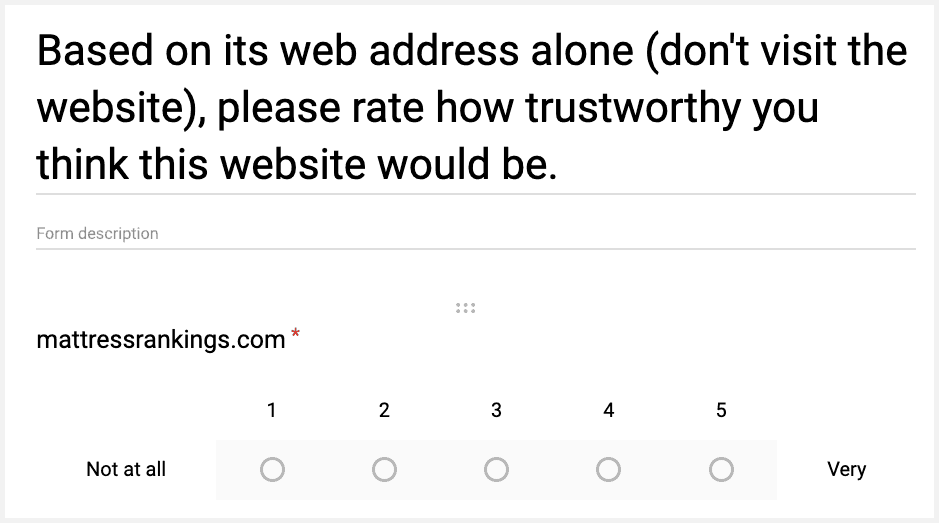
Part 2: Palate cleanser / distraction.
This section included several unrelated questions to distract people and find out their demographics.
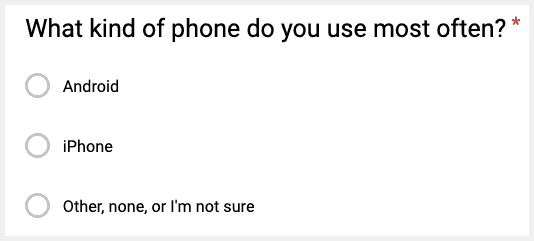
Part 3: Memorability.
Now that they’d been distracted, I asked them to write the exact URL they saw at the beginning. (They couldn’t go back to see it again.)
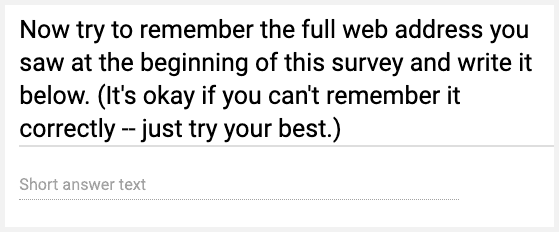
And since I was looking for survey respondents from the general population (not just bloggers), I decided to directly pay for survey responses.
No giveaway or survey-promotion needed.
I used Amazon Mechanical Turk to do that, but as I mentioned earlier, Google Surveys and SurveyMonkey Audience would also have worked.
I ended up paying $705 to get 1,500 survey responses via Mechanical Turk.
3: “Survey” Experts for Their Opinions
Another shortcut I took for this post:
I asked far fewer experts for their opinions.
This was a necessary change: since I knew the results post for this study was going to be much shorter than my previous article, it wouldn’t make sense to have over a dozen influencer quotes again.
I ended up reaching out to six influential experts, including a few that I’d quoted previously.
(I wanted some “new blood,” but also wanted to strengthen my reputation and relationships with the previous crowd.)
Four of them provided quotes…
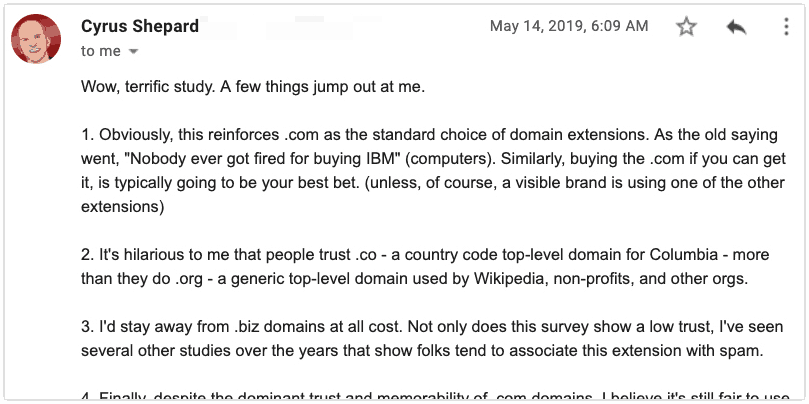
And thanks to their support on social media, the article was once again spread by other influencers who were not quoted:
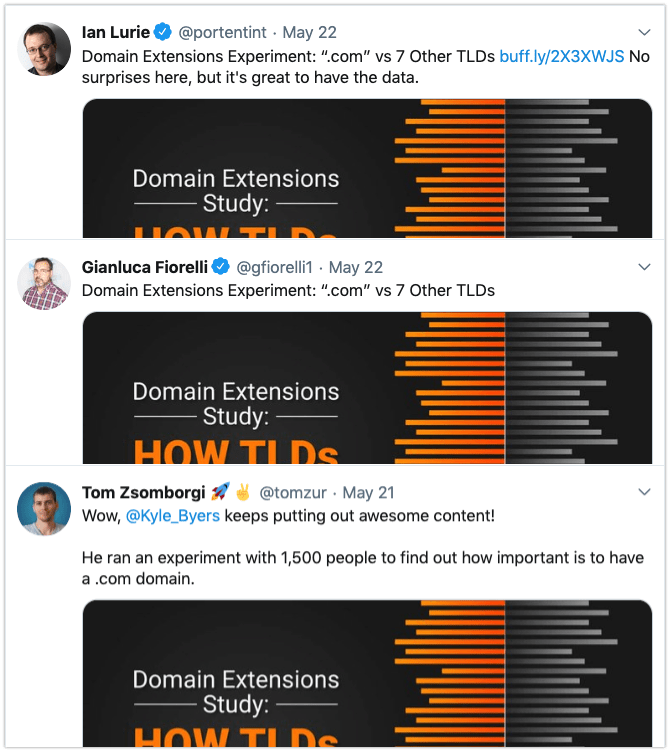
Leading to those 300+ total shares that I mentioned above.
Not bad.
Try It Yourself
Now that you’ve seen how this all works, it’s time for you to apply it!
Click here to download an illustrated checklist of the Double Survey Technique and get started.
Then leave a comment below to let me know what you think of this content marketing strategy.

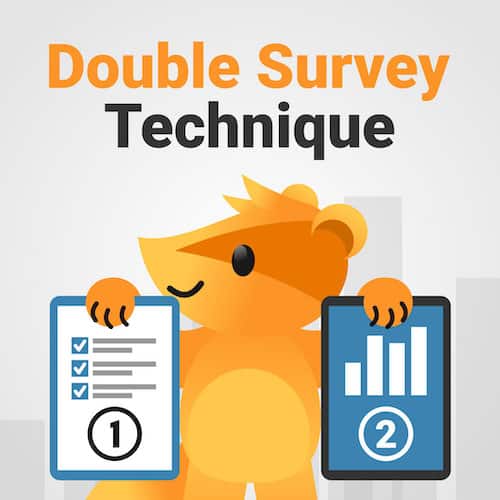





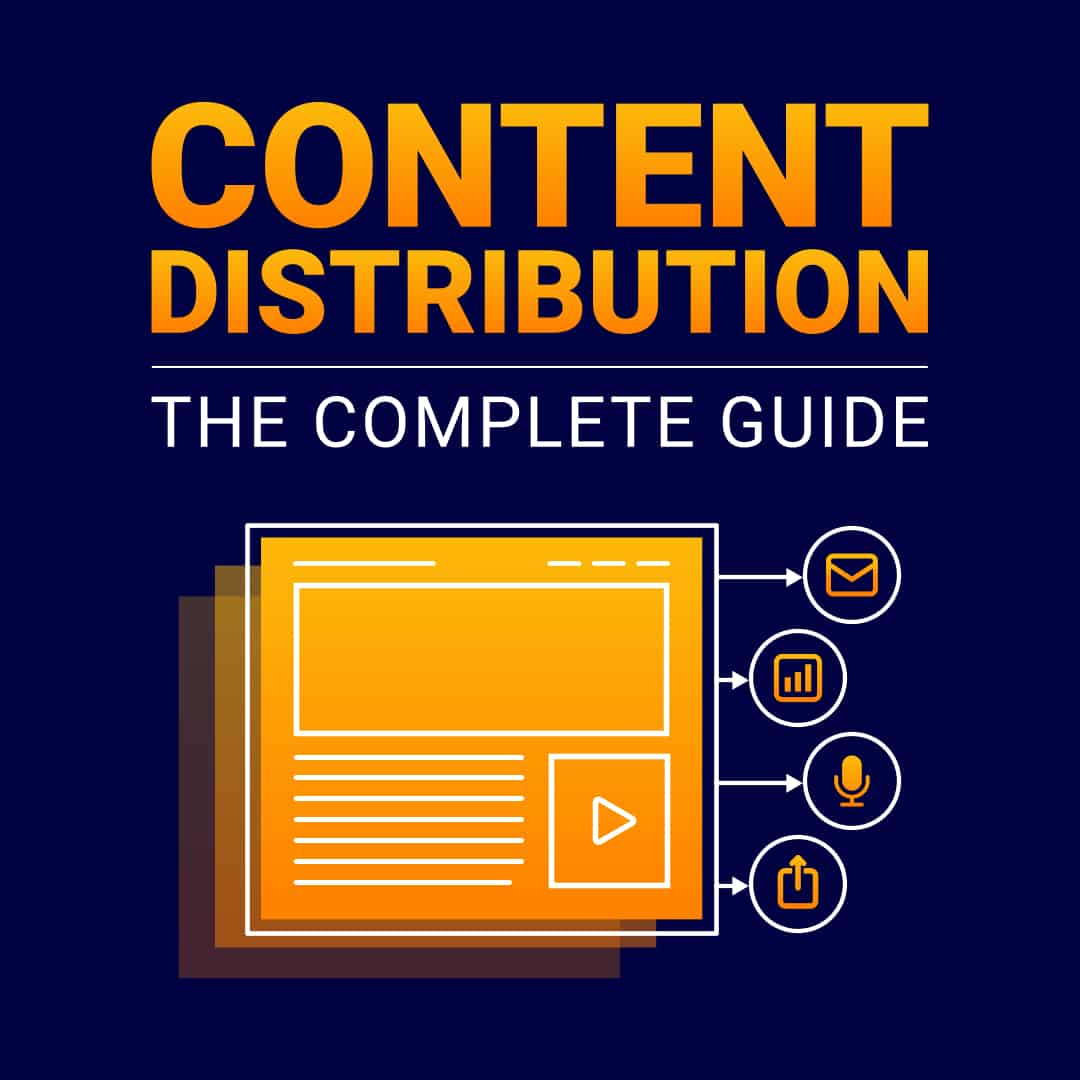






Wow Kyle! I love your “double survey” technique, it’s really clever and the walkthrough of it is fantastic. If you can/want to share, how much did you spend in total ($$ not time) making it happen? It’s a lot of work, but your bonus/shortened version technique appeals to me the most, and it appears to work great too. Backlinks from 31 root domains so far, not bad.